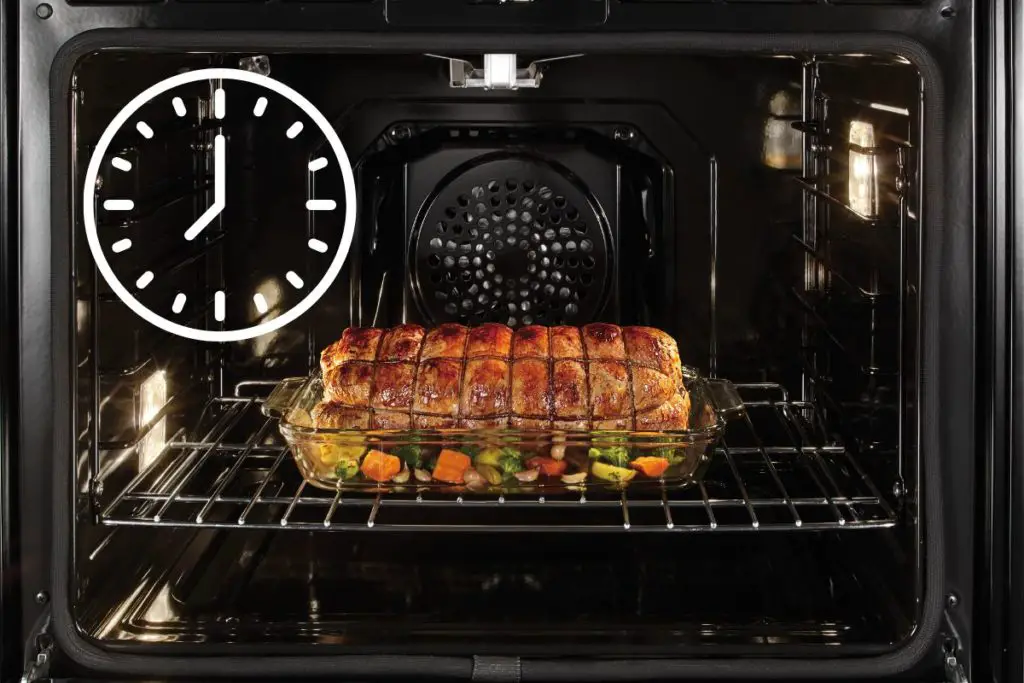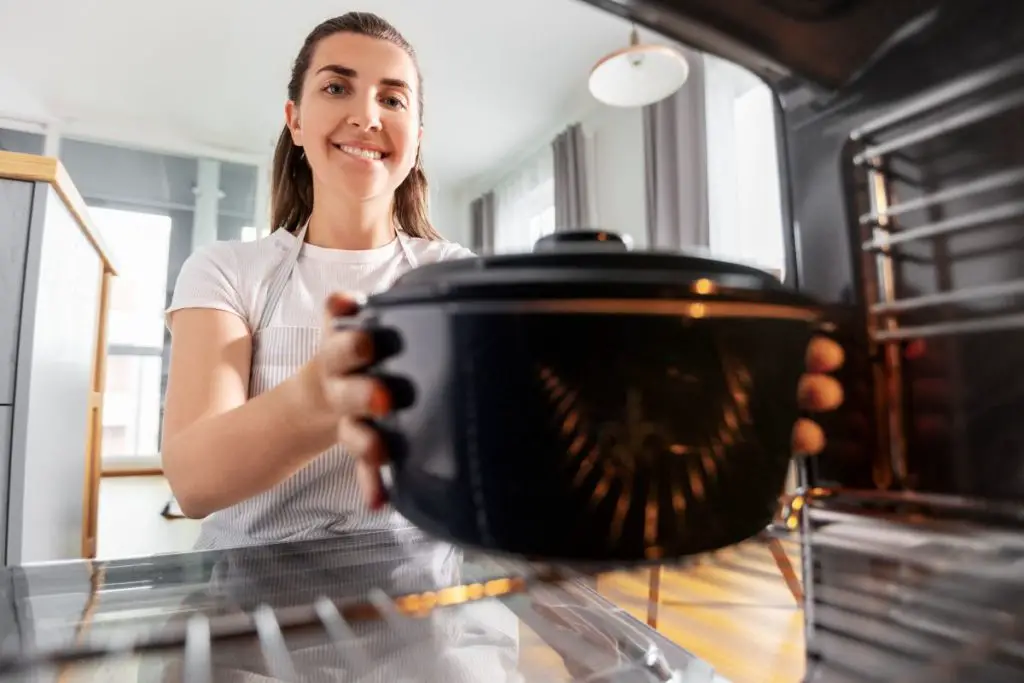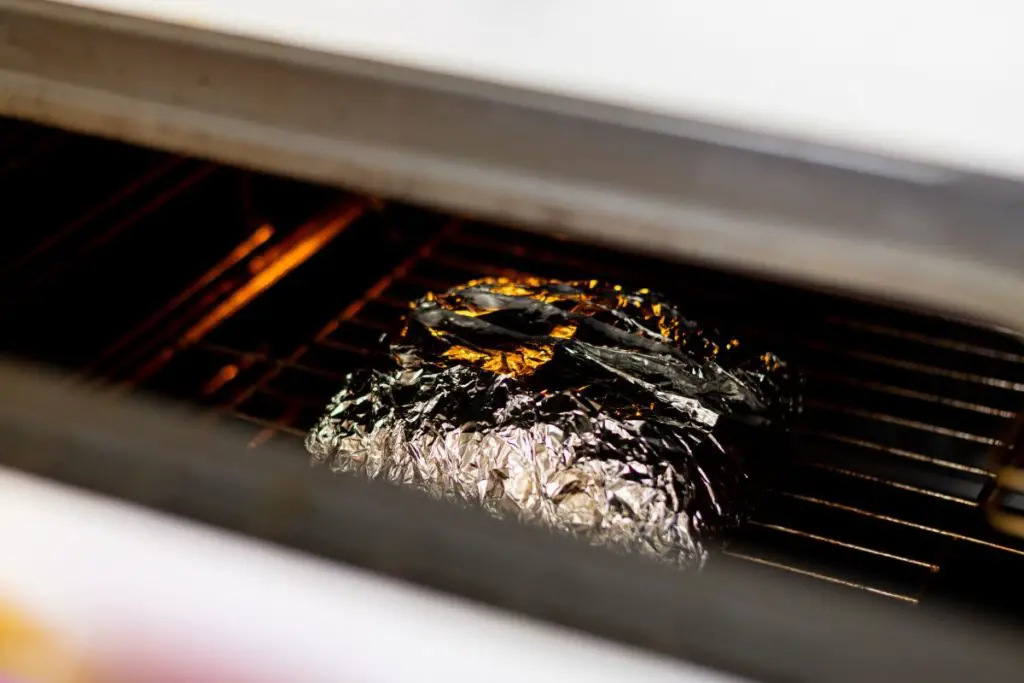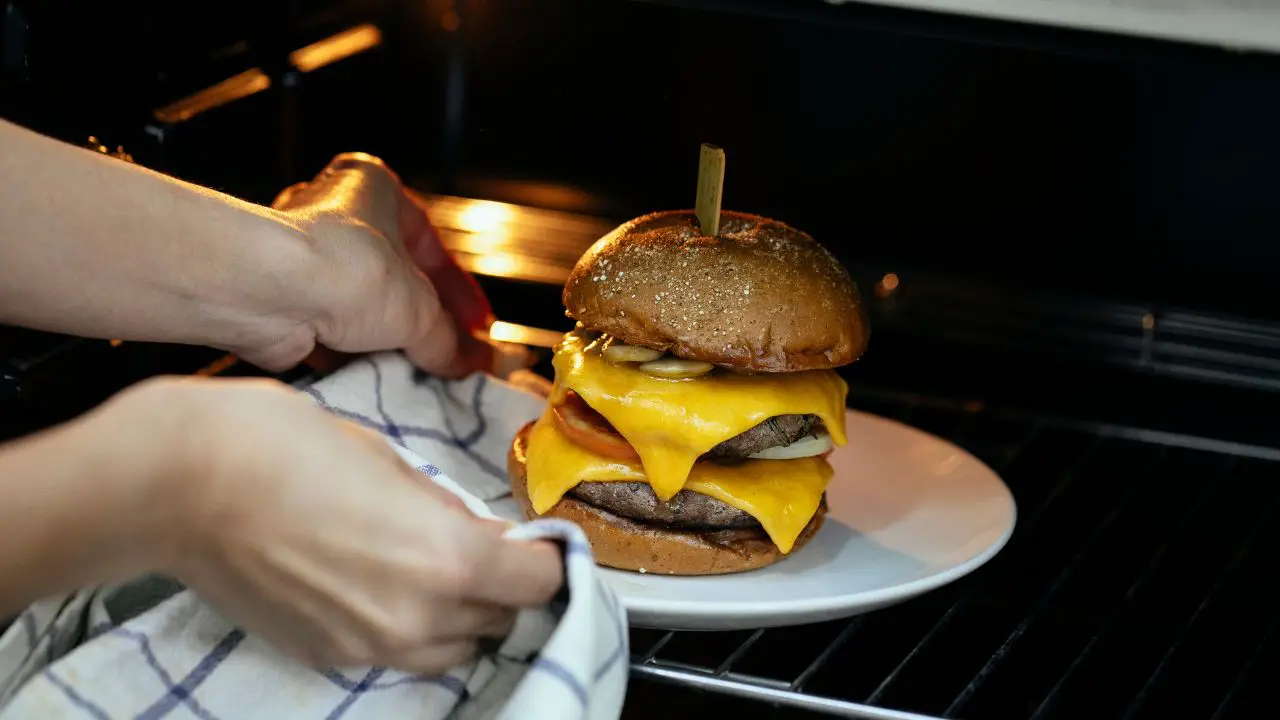Your dinner guests are running late, or the meat is ready, but you are yet to prepare the garnish. There can be multiple reasons your food can’t be served just yet and needs to be kept warm for a few extra minutes or sometimes even hours.
In this post, I will cover how to safely keep food warm in an oven but without overcooking or drying out.
Oven Temperature To Keep Food Warm

When you try to keep food warm, it is of utmost importance to keep in mind the safe temperature ranges—it cannot be hot enough to overcook your meal, but it has to be hot enough to prevent bacterial growth as it sits at room temperature.
According to the US Food and Drug Administration (FDA), the ideal temperature range to keep food warm in the oven should be above 140°F (60°C) but to prevent overcooking; you should aim for temperatures that do not exceed 200°F (93°C) [1].
As such, when it comes to keeping food warm in the oven, it is all about finding the right balance between the safe temperature and the amount of time you plan to keep the food in the oven. If you don’t find this balance, your food can either become dry, overcooked, or unsafe to eat.
How Long Can You Keep Food Warm In An Oven, Safely?

Once you have turned the oven off and the temperature drops, the rule to follow here is that food should not be kept in the “danger zone,” between 40°F and 140°F (4.4–60°C) for more than two hours after which it should be refrigerated or reheated.
Any food left in the danger zone for more than 4 hours should be thrown away immediately and not refrigerated or reheated.
However, if you have reduced the oven temperature but still kept it above the 140°F (60°C), then the time you can keep your food in the owner depends on how fast the dish will dry out and how quickly it will overcook or even burn.
But with most dishes, once it is fully cooked, keeping it in the oven for an extra hour or longer will inevitably start to affect its quality.
As you can see, there is no straightforward answer since factors such as the type of meal and humidity levels will always affect the timeframe. For example, casseroles and stews are more forgiving than lean chicken breast, pork chops, or baked goods like pies, bread, and pizza.
In this regard, there are two main aspects you need to consider: food safety and food quality.
When it comes to food quality, it is inevitable that the longer you keep your dish warm in the oven, the more it will start to lose quality. Aspects such as fragrance, taste, or texture will begin to degrade, and after an hour, your meal will most certainly not be as good as it was when freshly made.
As for food safety, it depends on the ingredients in your meal. However, experts agree that dishes made with perishable foods like meat, poultry, fish, eggs, and dairy products should not be kept at temperatures between 40°F and 140°F (4.4–60°C) for more than 2 hours if you plan to refrigerate them for the following day.
However, when keeping your food at a higher temperature, there are some methods you can use to help keep food warm in the oven for longer periods of time without drying it out too fast.
Methods To Keep Your Food Warm In The Oven

No one likes lukewarm or cold food, especially when it’s supposed to be hot. Here are a few simple methods to keep your food warm in the oven so you can enjoy a hot meal.
Use The Ovens Warming Drawer
Some ovens have a warming drawer included for the specific purpose of keeping your food warm—not store pans and pots, as many think!
Since it is designed to preserve warm temperatures, it should always be your first option if you’re lucky enough to have it.
However, some ovens do not specify the temperature range of their warming drawers, so it might be helpful to monitor your dishes’ inner temperature with a food thermometer to ensure it doesn’t go below the safe range.
Set Your Oven At The Right Temperature
But if your oven doesn’t have a warming drawer, do not lose hope—you can still mimic that environment.
Since, according to the FDA, the perfect temperature range for warm food sits between 140°F-200°F (60°C-93°C), you can always turn your oven on and heat it at those temperatures. In this case, you are ensuring a safe temperature range for your meal without much effort.
But before setting it manually, check your oven—some have a “warm” setting, tailor-made for these circumstances by selecting the right temperature without any additional effort.
Use Casserole Dishes With Insulated Walls
Cast iron, stoneware, and ceramic are the gold standard for retaining heat. Casserole dishes are often made of ceramic, which is an oven-safe material. Naturally, this makes this cookware an ideal option to preserve the warmth of your meal.
Keep in mind that you need to secure the lid, as this is what will prevent heat and moisture from escaping the dish. You can also combine the previous methods—placing your casserole dish in the turned-on oven for the most efficient approach.
Use Aluminum Foil
If the cookware you use does not have a lid or if your dish is in a tray or baking dish, consider using aluminum foil. Since it is a heat insulator, it will lock moisture, heat, and fragrances inside the dish for longer.
However, don’t forget that you shouldn’t use this method if your food is highly acidic, such as tomato sauce or rhubarb, because the aluminum will leach into the food [2].
In addition, if not paired with additional heating methods, just using aluminum foil will only keep the food warm for about half an hour.
Wrap Your Oven Dish In A Kitchen Towel
Wrapping the oven dish in a cotton kitchen towel or dishcloths—around, on top, and underneath will add extra insulation and helps to preserve the heat once the oven is turned off. If wrapped really well, the food can stay hot for up to an hour without fear of overcooking.
How To Keep Food From Drying Out In The Oven While Keeping It Warm?

If your food dried out in the oven, odds are you did not preserve the moisture properly, and it evaporated with continuous exposure to the low, warm temperatures.
Firstly, as discussed above, you must find the right balance between time and temperature. If you keep food in the oven at a very high temperature, it will eventually dry out, or if you leave the food in the oven for too long, it will eventually dry out.
One of the best ways to keep your food from drying out is to use a lid to seal your container as tightly as possible. To preserve the moisture, always use the fitting lid or aluminum foil.
Another technique to preserve humidity in your dish is to add a bowl of hot water to the bottom of your oven. The heat inside the oven will create steam, increase the moisture, and prevent your meal from losing more of its own.
Also, depending on the dish, you can add more hot water, broth, or sauce to maintain the food’s moisture.
However, depending on your dish, sometimes drying out may be inevitable. Lean cuts of meat dry out and can overcook quite quickly, and some vegetables may get tough relatively fast. In such cases, your best bet is to seal the dish as tightly as possible and try not to let it sit in the oven for too long.
Read Also: Leaving An Oven On Overnight – Important Safety Precautions!
Common Mistakes While Keeping Food Warm In The Oven
Here are some additional tips and a recap of some of the most important points we have already covered above.
Not Covering The Dish
If you don’t cover your dish with a well-fitting lid, it will lose moisture quickly and degrade its quality and taste. If your food is temperature-sensitive, it may even overcook without you intending to.
If you do not have an appropriate lid, use aluminum foil to cover your dish.
Using Plastic Containers
Plastic is not oven-safe. Using plastic containers and lids will risk them melting in the oven, contaminating your food and devices.
Not Monitoring The Temperature
If you are not using the oven’s automatic warm setting, you need to monitor the temperature of your dish. Otherwise, you risk it getting into a danger zone and subsequently becoming a bacterial hotspot, keeping it too hot and risking overcooking and drying out.
If you cannot monitor the temperature with a thermometer, and if you are unsure if it is in the danger zone, try reducing the time you leave your dish in the oven. To follow food safety guidelines, high-risk foods that have been kept in the temperature danger zone for longer than 2 hours should be consumed immediately or cooled as quickly as possible to a temperature of 40°F (5°C) or below.
Keep in mind the FDA encourages you to discard any high-risk dishes containing ingredients, such as meat, poultry, fish, eggs, and dairy products, that have been left in the food temperature danger zone for more than 4 hours [1].
Read Also: 3 Easy Ways To Reheat Frozen Lasagna – (Safe and Delicious).
In Summary
There are a few key things to remember when keeping food warm in an oven. First, set the oven to a low temperature, between 140°F (60°C) to 200°F (93°C). Second, wrap the food in foil or place it in a well-covered dish to prevent it from drying out. Finally, check on the food periodically to make sure it is not overcooking or drying out. By following these simple tips, you can keep most dishes warm for quite a long time without sacrificing the quality much.
References:
- [1] Serving Up Safe Buffets – Retrieved from: https://www.fda.gov/food/buy-store-serve-safe-food/serving-safe-buffets
- [2] How Does Aluminum Foil Keep The Food Warm? And Is It Safe? – Retrieved from: https://food.ndtv.com/facts/how-does-aluminum-foil-keep-the-food-warm-and-is-it-safe-1779130
